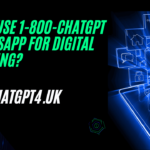GPT-4 is the next-generation language model from OpenAI, which is expected to surpass its predecessor, GPT-3, in terms of performance, capabilities, and applications. In this article, we will explore the various aspects of GPT-4, including its architecture, training data, features, applications, and availability.
Introduction to GPT-4
- GPT-4 is the fourth iteration of the Generative Pre-trained Transformer (GPT) series from OpenAI.
- It is a language model that uses deep learning algorithms to generate natural language text.
- GPT-4 is expected to have significantly larger parameters, higher accuracy, and better performance than GPT-3.
Architecture of GPT-4
- GPT-4 is expected to have a similar architecture to GPT-3, which consists of multiple transformer layers.
- However, GPT-4 is expected to have a much larger number of parameters, possibly in the range of several hundred billion.
- GPT-4 may also incorporate new techniques such as adaptive computation, sparsity, and hybrid training to improve its performance.
Training Data for GPT-4
- GPT-4 is expected to be trained on a massive amount of data, possibly in the range of several petabytes.
- This data may include a diverse range of sources such as books, articles, social media, and other internet content.
- The training data for GPT-4 is expected to be curated and filtered to ensure its quality and relevance.
Features of GPT-4
- GPT-4 is expected to have several new features that will enhance its capabilities for natural language processing tasks.
- These features may include better language understanding, higher accuracy, improved inference, and better generalization.
- GPT-4 may also incorporate new modalities such as images, video, and audio to generate more diverse and expressive text.
Applications of GPT-4
- GPT-4 is expected to have a wide range of applications in natural language processing, including text generation, machine translation, sentiment analysis, question answering, and more.
- GPT-4 may also be used for creative tasks such as story writing, poetry generation, and music composition.
- GPT-4 may also have applications in fields such as education, healthcare, finance, and legal.
Availability of GPT-4
- The availability of GPT-4 is not yet confirmed, as OpenAI has not announced any official release date.
- However, it is expected that GPT-4 will be available through OpenAI’s API, which allows developers to access and use the model for various applications.
- GPT-4 may also be available through cloud services or other platforms that provide access to large-scale language models.
Ethical and Social Implications of GPT-4
- GPT-4, like its predecessor, raises several ethical and social implications, including bias, privacy, safety, and accountability.
- The use of GPT-4 for generating fake news, propaganda, and disinformation is a major concern.
- GPT-4 may also exacerbate existing biases and inequalities in language use, and its impact on employment and education is still uncertain.
Comparison with GPT-3
- GPT-4 is expected to surpass GPT-3 in terms of performance and capabilities, but it is still unclear how much improvement will be achieved.
- GPT-4 may address some of the limitations and challenges of GPT-3, such as the lack of fine-grained control over text generation and the difficulty of transferring knowledge across domains.
- However, GPT-4 may also face new challenges, such as scalability, efficiency, and interpretability.
Potential Challenges for GPT-4
- Despite its expected improvements, GPT-4 may still face several challenges and limitations.
- The sheer size and complexity of GPT-4 may make it computationally expensive and difficult to train and use.
- GPT-4 may also struggle with certain linguistic phenomena, such as sarcasm, irony, and humor, which require contextual and cultural understanding.
Conclusion
- GPT-4 is a highly anticipated language model that has the potential to revolutionize natural language processing and transform various fields and industries.
- However, the ethical and social implications of GPT-4 should not be overlooked, and there is a need for responsible development and deployment of such powerful language models.
FAQs
What is GPT-4?
GPT-4 is the fourth iteration of the Generative Pre-trained Transformer (GPT) series from OpenAI, which is a language model that uses deep learning algorithms to generate natural language text.
What are the new features of GPT-4?
GPT-4 is expected to have several new features that will enhance its capabilities for natural language processing tasks, including better language understanding, higher accuracy, improved inference, and better generalization. It may also incorporate new modalities such as images, video, and audio.
What is the expected size of GPT-4?
GPT-4 is expected to have a much larger number of parameters than GPT-3, possibly in the range of several hundred billion.
What kind of training data will be used for GPT-4?
GPT-4 is expected to be trained on a massive amount of data, possibly in the range of several petabytes. This data may include a diverse range of sources such as books, articles, social media, and other internet content.
What are the applications of GPT-4?
GPT-4 may have a wide range of applications in natural language processing, including text generation, machine translation, sentiment analysis, question answering, and more. It may also have applications in creative tasks such as story writing, poetry generation, and music composition. It may also have applications in fields such as education, healthcare, finance, and legal.







